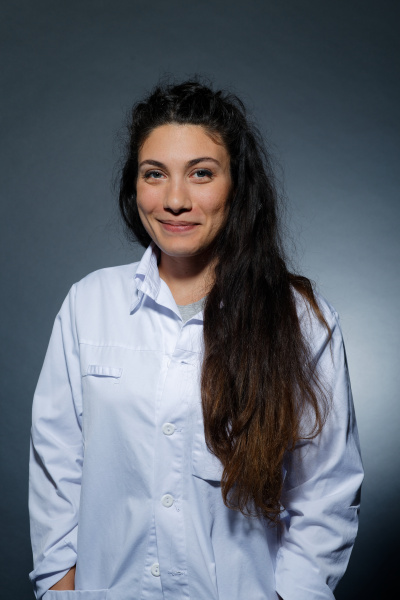Mme Rebecca Sipione

Mme Rebecca Sipione
PhD Student
E07.2758.a
Courriel
Born and raised in the southern corner of Europe (Sicily) I have graduated in Pharmacy at the Alma mater studiorum of Bologna in the northern part of Italy. The five-year single cycle master’s degree in pharmacy aims principally to provide the scientific foundations required to exercise the profession of pharmacist, or to work in the healthcare field as a pharmaceuticals and healthcare product experts. The learning areas are multiples and heterogeneous. They comprehend:
1- basic physics, mathematics, chemistry and biology.
2- human physiology and physiopathology.
3- pharmacology and toxicology.
4- Pharmaceutical chemistry.
5- technology, legislation and laboratories (Drug analysis and Methodologies in Pharmaceutical science).
During those years I had the chance to carry on a six-month internship in Neuropharmacology in Hanns Hulrich Zeilhofer’s Lab at UZH in Zurich as a master thesis student. The project I was aimed to addressed the morphological and functional characterization of a subpopulation of inhibitory dorsal horn interneurons. This subpopulation was defined by the expression of a marker gene. In the context of the morphological analyses, I have learned how to properly obtain tissue sections on cryostats, performed immunohistochemistry assays and managed to correctly use a confocal microscope. In the functional experiments (for the behavioural part), I collected data from mice strains transduced with Adeno associated viruses (AAV) carrying DREADD (Designer Receptors Exclusively Activated by Designer Drugs) to induce in vivo specific activation spinal interneurons.
Those months were crucial for me, I fell in love with research in general and Neurons in particular. As one of the best masterpieces of evolution (elegant and perfectly engineered) these cells had only one freckle in my eyes: dead neurons cannot be replenished. Even thou there is an exception to every rule: the neurons into the Brain subventricular zone and the sensory ones in the Olfactory epithelium. This exciting exception led me into “The inner ear and olfaction lab “leaded by Professor Pascal Senn, here in Geneva. Here I am, indeed, following the REGROLF project dealing with neuron regeneration.
Description of the project:
Shearing of the contact between Olfactory sensory neurons and the olfactory bulb can occur after an occipital impact. It can cause deceleration and movement of the brain relative to the skull thus the severing of the axons traversing the cribriform plate: olfactory function is impaired[1, 2]. When it occurs, the rewiring process can be inaccurate, and axons may not connect to the original areas in the olfactory bulb. Correct targeting after trauma relies on the presence of previous axons acting as a scaffold, which guides following axons to grow [3]. In human, little is known about neuronal regeneration in post-traumatic anosmia. Uncovering mechanisms that facilitate the guidance of axons to target the olfactory bulb may provide insight to help patients suffering from post-traumatic smell loss (anosmia). This mechanism can be investigated through Neurosphere or biopsy based in vitro models used to test the effect that different growth factors (GF) has on Olfactory sensory neuron regeneration. This could result in the development of future intervention for post-traumatic anosmia.
1- Moran, D.T., et al., Electron microscopy of olfactory epithelia in two patients with anosmia. Arch Otolaryngol, 1985. 111(2): p. 122-6. 12.
2 Jafek, B.W., et al., Post-traumatic anosmia. Ultrastructural correlates. Arch Neurol, 1989. 46(3): p. 300-4.
3. Murai, A., et al., Distorted Coarse Axon Targeting and Reduced Dendrite Connectivity Underlie Dysosmia after Olfactory Axon Injury. eNeuro, 2016. 3(5).
